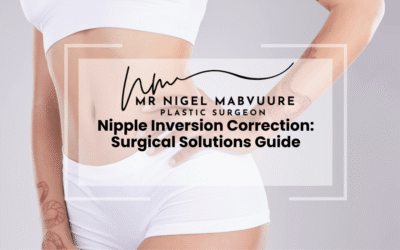Understanding and Addressing Breast Asymmetry
- Prevalence: Breast asymmetry affects over 88% of women and is a normal variation in breast development.
- Causes: Hormonal changes, genetic factors, and lifestyle can contribute to breast size and shape differences.
- Medical Considerations: While mild asymmetry is normal, significant changes should be professionally evaluated.
- Treatment Options: Solutions range from non-surgical approaches like specialized bras to surgical correction techniques.
- Surgical Approach: Customized surgical interventions can address asymmetry with minimal scarring and optimal aesthetic outcomes.
- Recovery: Post-surgical recovery typically takes 4-6 weeks, with final results visible after 3-6 months.
- Decision-Making: Comprehensive consultation and experienced surgical expertise are crucial for successful treatment.
Table of Contents
- What Causes Breast Asymmetry and How Common Is It?
- Identifying Different Types of Breast Asymmetry
- Medical Implications and When to Seek Professional Help
- Non-Surgical Solutions for Minor Breast Asymmetry
- Surgical Options for Correcting Breast Asymmetry
- Recovery and Results: What to Expect After Surgery
- Making an Informed Decision About Treatment
What Causes Breast Asymmetry and How Common Is It?
Breast asymmetry is remarkably common, affecting more than 88% of women to some degree. During natural development, variations in breast size and shape occur due to differences in hormonal sensitivity and tissue response. Oestrogen and progesterone levels during puberty significantly influence breast development, often leading to temporary or permanent asymmetry.
Genetic factors play a crucial role in determining breast development patterns. Family history often reveals similar patterns of asymmetry across generations. Environmental factors and lifestyle choices, including weight fluctuations and physical activity, can also contribute to breast asymmetry development or progression.
Identifying Different Types of Breast Asymmetry
Breast asymmetry manifests in various forms, each requiring different approaches to correction. Volume discrepancies are the most common type, where one breast contains more tissue than the other. Shape variations may include differences in breast width, projection, or overall contour. Position asymmetry occurs when nipple-areola complexes or breast footprints sit at different heights on the chest wall.
Development patterns can result in tuberous breast deformity affecting one side more than the other, or variations in breast tissue density between sides. Understanding these distinct types helps determine the most appropriate treatment approach for each individual case.
Contact
Medical Implications and When to Seek Professional Help
While mild asymmetry is normal, significant differences may indicate underlying medical conditions requiring attention. Regular breast screening becomes particularly important when asymmetry is pronounced or develops suddenly. At our Northern England clinic, we recommend professional assessment when asymmetry causes physical discomfort, affects posture, or impacts daily activities.
Our diagnostic approach includes comprehensive imaging, tissue analysis, and detailed measurements to determine the extent of asymmetry and rule out any concerning conditions. Early intervention often leads to better outcomes, particularly when asymmetry affects physical or emotional well-being.
Non-Surgical Solutions for Minor Breast Asymmetry
For mild asymmetry cases, several non-surgical interventions can provide satisfactory results. Custom-fitted brassieres with differential padding offer immediate cosmetic improvement. Targeted exercises focusing on chest wall muscles may help improve overall appearance, though they cannot correct significant tissue differences.
Weight management plays a crucial role, as breast tissue contains fatty tissue that responds to body mass changes. Some patients find success with specialised compression garments designed to minimise visible differences. These conservative approaches often serve as first-line solutions before considering surgical intervention.
Surgical Options for Correcting Breast Asymmetry
Surgical correction of breast asymmetry requires a customised approach based on individual presentation. Options include augmentation of the smaller breast, reduction of the larger breast, or a combination of techniques. Advanced surgical methods may involve fat transfer, tissue rearrangement, or implant placement to achieve optimal symmetry.
The choice of surgical technique depends on factors such as tissue quality, degree of asymmetry, and patient goals. Modern approaches prioritise minimal scarring while maximising aesthetic outcomes. Our surgical planning incorporates 3D imaging technology to visualise potential results and guide procedure selection.
Recovery and Results: What to Expect After Surgery
Post-operative recovery following breast asymmetry correction typically spans 4-6 weeks. Initial healing requires restricted activity and careful wound care. Patients usually return to light activities within two weeks, with full recovery expected by six weeks. Compression garments play a vital role in optimising healing and maintaining results.
Final results become apparent as swelling subsides, typically within 3-6 months post-surgery. Long-term outcomes remain stable, though natural aging processes continue to affect breast tissue. Regular follow-up appointments ensure optimal healing and address any concerns promptly.
Making an Informed Decision About Treatment
Choosing the right treatment approach begins with a thorough consultation to discuss goals, examine options, and understand potential outcomes. Cost considerations vary based on the complexity of correction required, with some cases qualifying for NHS coverage when significant functional impact exists.
Selecting an experienced surgeon with specific expertise in breast asymmetry correction significantly influences results. Timing of surgery should account for completion of breast development and stability of body weight. Our team provides comprehensive support throughout the decision-making process, ensuring patients feel confident in their treatment choices.
Frequently Asked Questions
- Is breast asymmetry normal?
- Yes, breast asymmetry is extremely common, affecting over 88% of women. Minor differences in breast size, shape, and position are considered a natural variation during development.
- Can breast asymmetry be corrected without surgery?
- Minor asymmetry can be managed through non-surgical methods like custom-fitted bras with padding, targeted chest exercises, weight management, and specialized compression garments. However, significant asymmetry may require surgical intervention.
- What causes breast asymmetry?
- Breast asymmetry can result from multiple factors including hormonal variations during puberty, genetic predisposition, weight fluctuations, environmental influences, and differences in hormonal sensitivity during breast development.
- When should I be concerned about breast asymmetry?
- Consult a healthcare professional if asymmetry causes physical discomfort, develops suddenly, impacts posture, or creates significant emotional distress. Sudden changes may indicate underlying medical conditions requiring professional assessment.
- How long is recovery after breast asymmetry correction surgery?
- Typical recovery spans 4-6 weeks. Patients can usually return to light activities within two weeks, with full recovery expected by six weeks. Final results become apparent 3-6 months post-surgery as swelling subsides.
- Are surgical treatments for breast asymmetry covered by insurance?
- Coverage varies. Some cases with significant functional impact may qualify for NHS coverage. Private insurance policies differ, so it’s essential to consult your provider and discuss the specific medical necessity of the procedure.
- How do surgeons determine the best correction method?
- Surgeons assess individual factors including tissue quality, degree of asymmetry, patient goals, and overall body proportions. Advanced techniques like 3D imaging help visualize potential outcomes and guide personalized treatment planning.




